Grist Mill
Introduction
Text-to-speech Audio
Images
North side of the Newlin Grist Mill. The 2-story stone section on the right-hand side is the original 1704 portion.
.jpg)
Date stone on the original section of the mill, reading "1704 Nathan Mary Newlin"

View from the headrace just before it passes under Cheney Road and enters the Grist Mill. A wooden trash rack to filter out debris can be seen at the opening of the pipe.
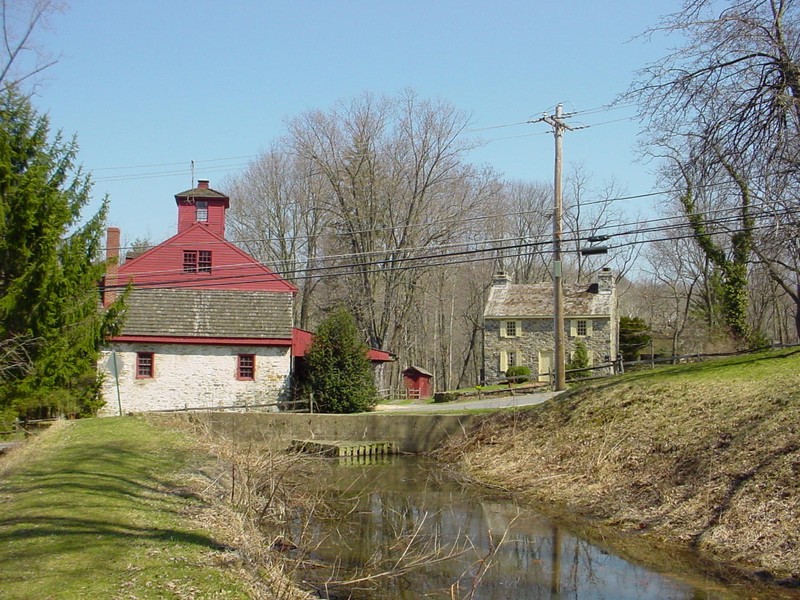
The water is brought from the headrace into a flume box. The mill is powered by releasing water from the flume onto the waterwheel.
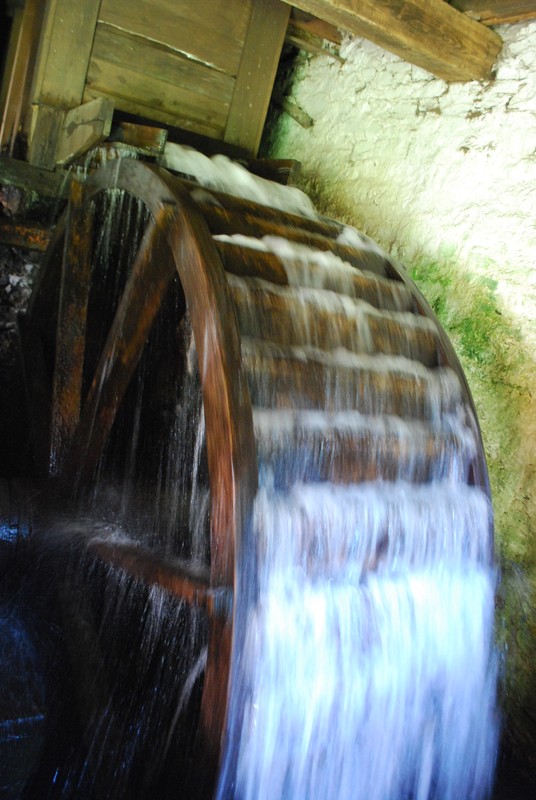
The power from the waterwheel is transferred to a system of gearing.
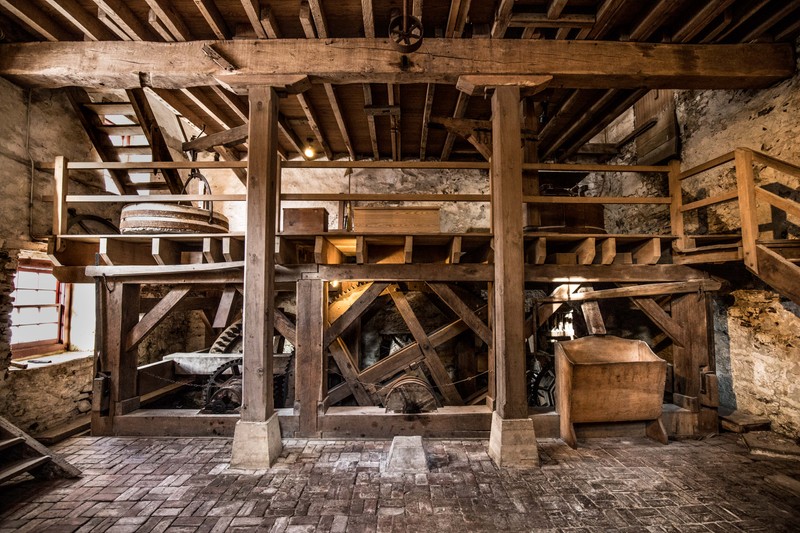
The gearing increases the speed and changes the plane of rotation, then transfers the power to turn a large millstone.
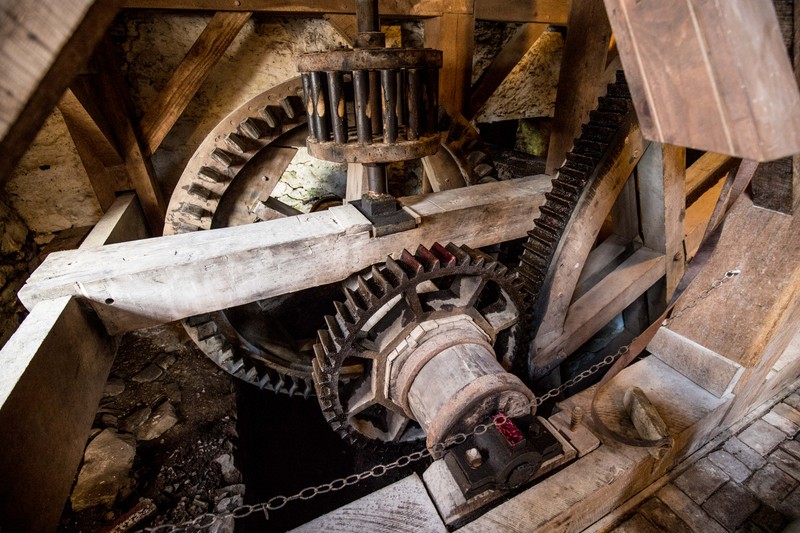
On the floor above, the millstone is enclosed in a wooden box, with a hopper on top to feed grain in to be ground.
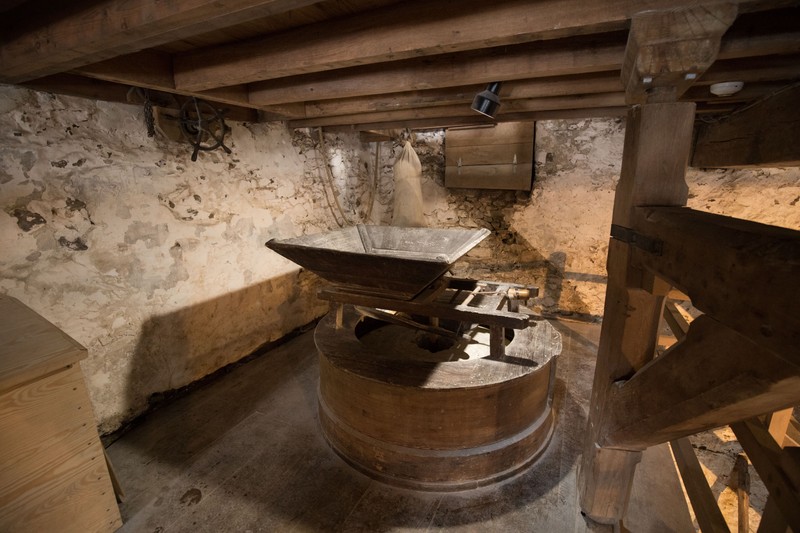
The top stone, called the runner stone, can be moved out of the way to access the bottom stone, the bedstone. Both have to be regularly cleaned and sharpened.
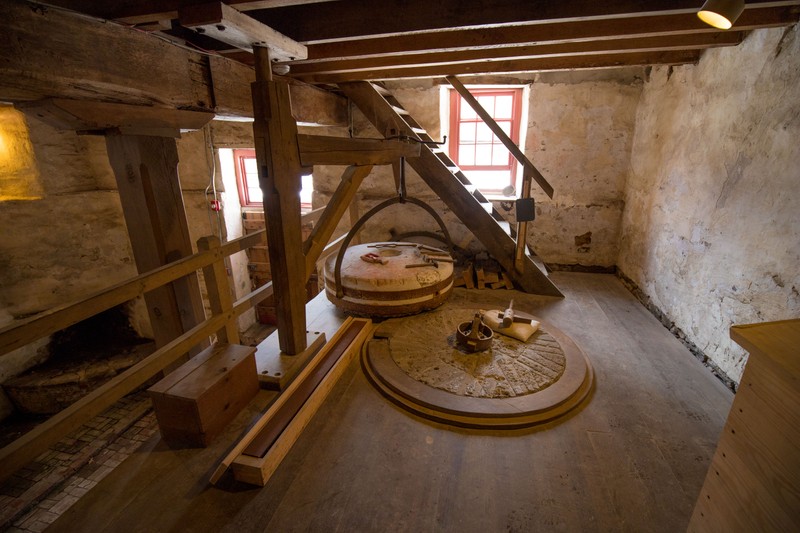
On the upper floor of the mill, the resulting meal and flour would be cooled down by hand-raking.
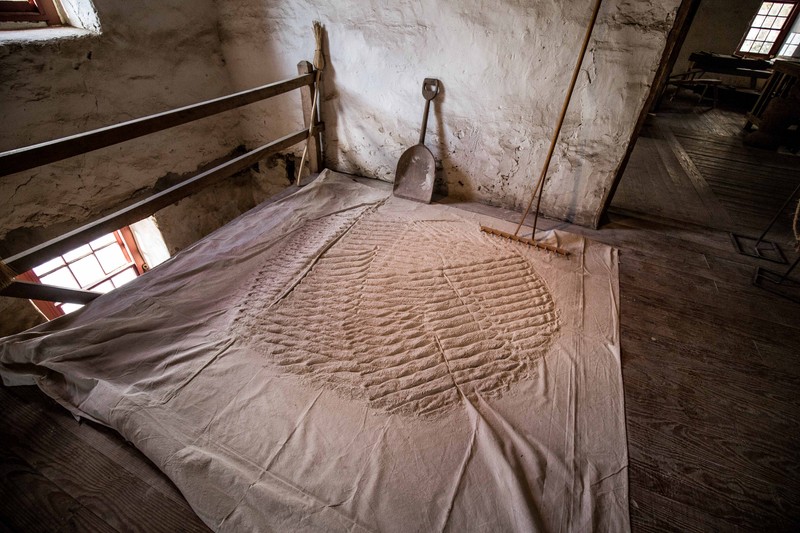
Depending on its use, the flour might go through various sifting processes. The sifter pictured here is a hand-crank model.
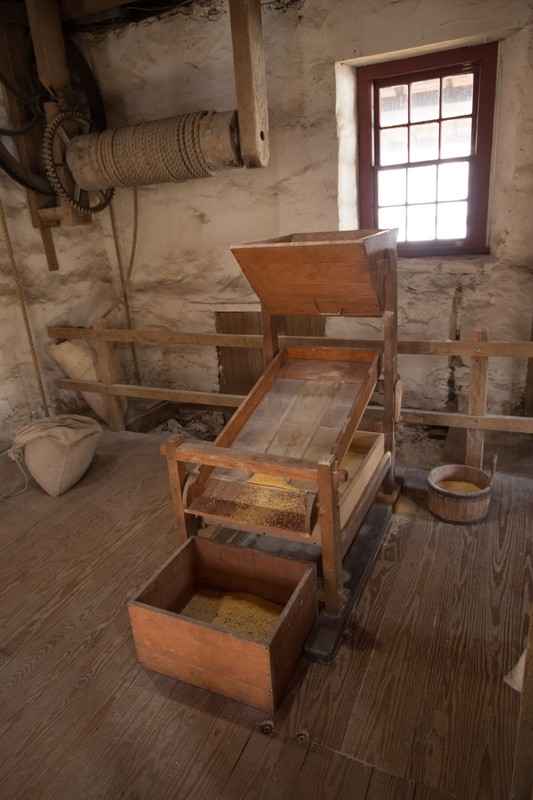
Flour intended for export was weighed and packed according to the regulations of the colony of Pennsylvania.
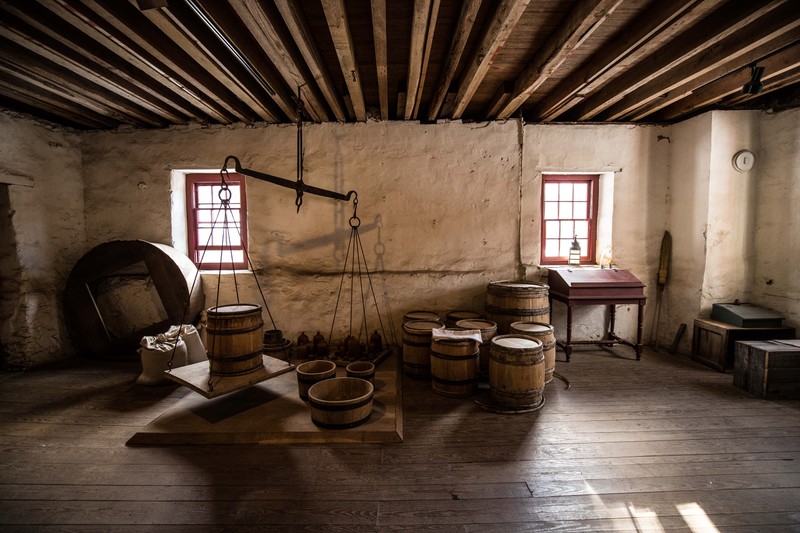
Staff and volunteers have been working to build a new flume and waterwheel in the Millwright Shop. Here, a rim-board for the waterwheel is being prepared.
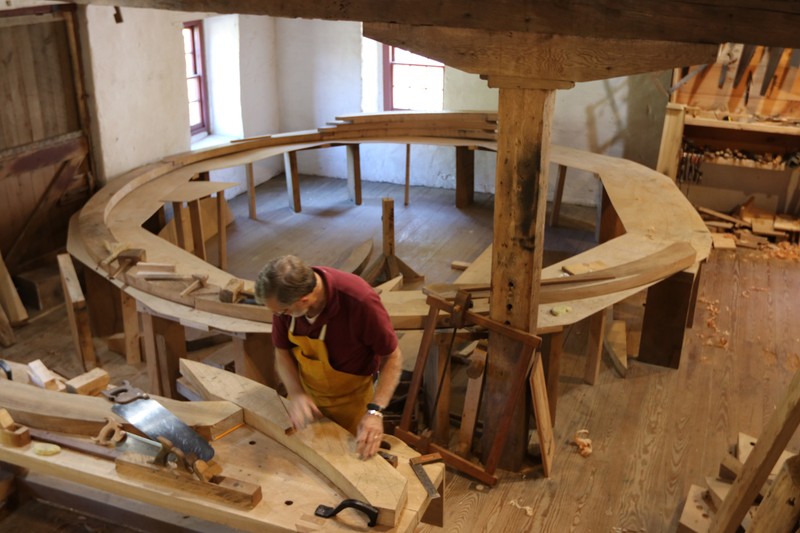
The projects in the Millwright Shop are done with historic tools and techniques to help further understanding of the trade of the millwright.
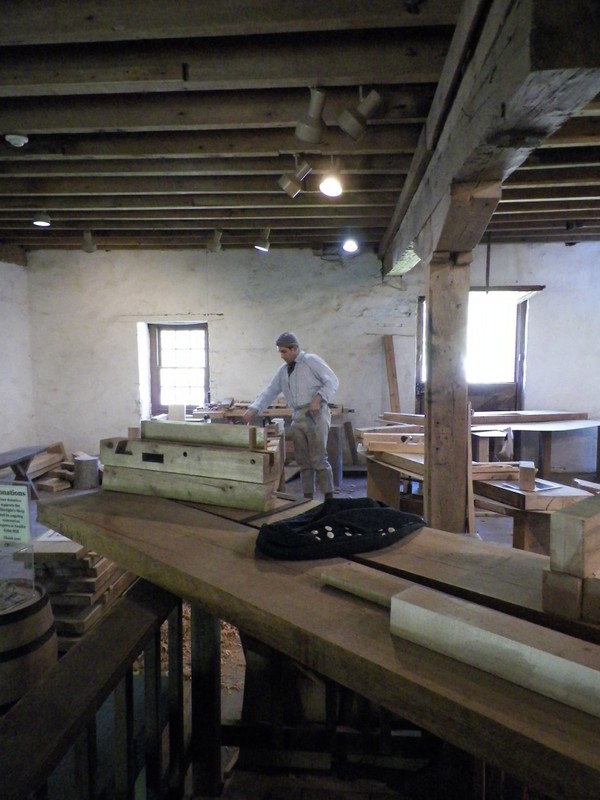
A sawmill was later added on to the south side of the Grist Mill. It was powered from the same millrace but had its own waterwheel.
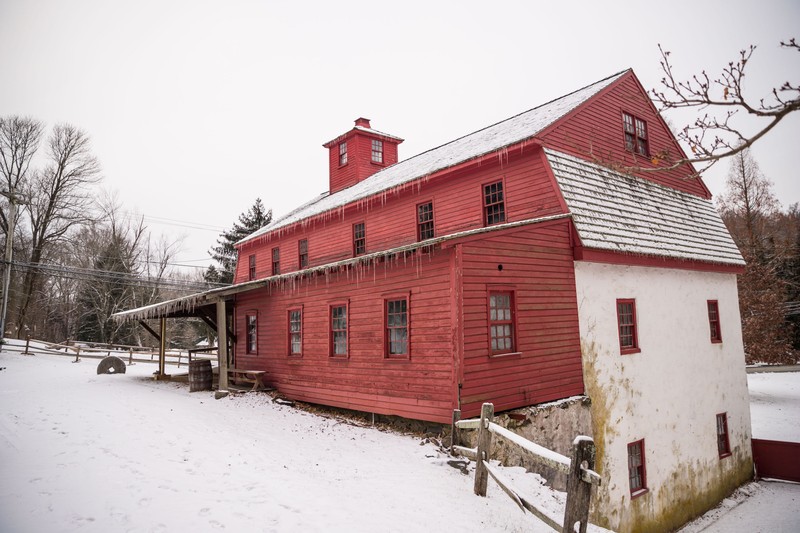
View of the south side of the Grist Mill from the Trimble House.
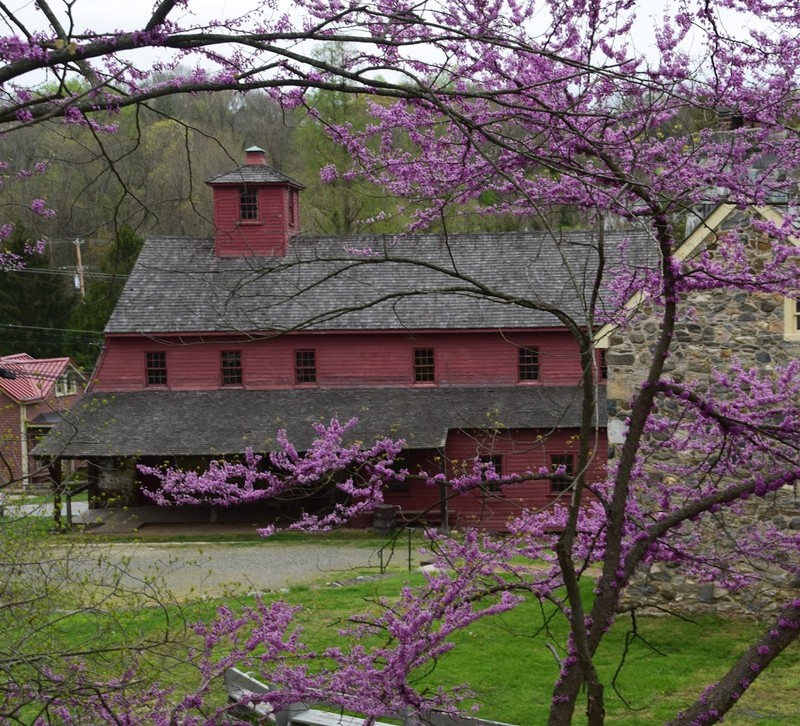
The millstone set into the ground next to the porch of the Grist Mill came from a bark mill, where bark from oak trees was crushed to extract tannin for use in tanning leather. This type of stone runs upright on its edge in use and was powered by an draft animal harnessed to a shaft set into the center of the stone.
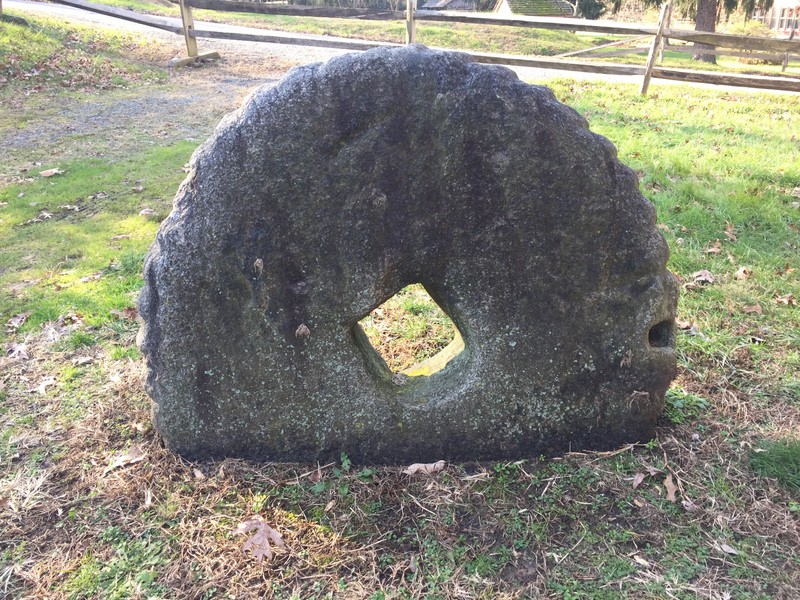
Early photograph of the mill when it was known as "Concord Flour Mills."
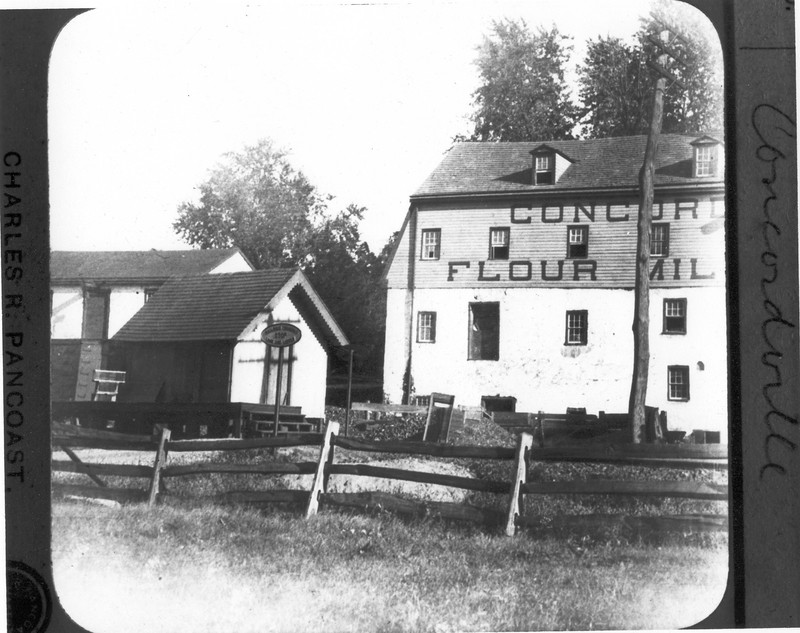
Postcard of the grist mill, taken from the southwest, c1907.
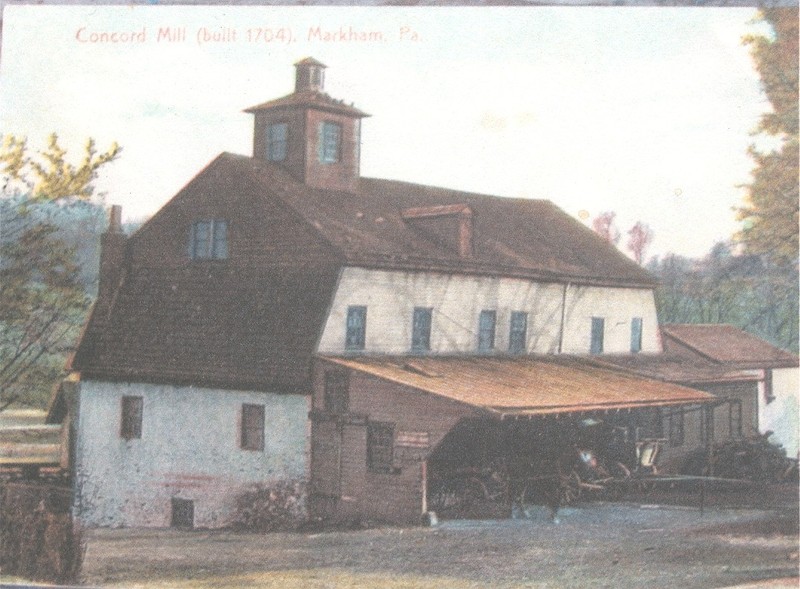
Backstory and Context
Text-to-speech Audio
Nathaniel Newlin (Nicholas’s son) and his wife Mary built the Grist Mill in 1704. In the beginning, it ran as a custom mill, grinding grain into meal or flour on demand for individual farmers in the area. The miller would take a portion of the grain as his payment—this was called the toll. Toll amount varied widely by time and place, but a typical amount would have been 1/16 to 1/32 of the total. The toll could also be paid in cash or barter. Wheat, corn, rye, barley, oats, and maslin (a mixture of wheat and rye) would have been ground in the mill.
In 1739, the Newlins added a large 2-story stone addition to the mill. This addition would have at least doubled the grinding capacity of the mill. At the same time, they hired a professional miller to handle the increased business and built a stone house close to the mill to attract a miller. At this point, the mill was expanding to operate as a merchant mill, where the miller would buy the grain from farmers and sell the flour commercially. Usually, even merchant mills were required to continue some custom milling. The changes in 1739 reflect the increased production of the area’s farms, as well as the expanding regional and global markets for flour.
By the middle of the 18th century, the Newlin family were prosperous mill owners, hiring a miller to run the mill on a day-to-day basis but still retaining control over operations. By the 1770s, they had leased out the Grist Mill to the Trimble family and had stepped away from its management. In 1817, the mill was purchased by William Trimble. It was rented and/or owned by the Sharpless family for a time before the Hill family purchased it in 1860.
The third floor (frame addition with red wooden siding) was added to accommodate later milling equipment during the 19th century. The cupola on top of the roof was likely added around the turn of the 20th century for the same reason. The Newlin Grist Mill ceased operations as a commercial mill in 1941.
E. Mortimer Newlin, a ninth-generation descendant of Nicholas Newlin, purchased the mill and began the process of restoring it to its colonial configuration in 1956. Four years later, Newlin Grist Mill opened to the public, and Mortimer Newlin created the Nicholas Newlin Foundation to support the site. Over the next few decades, Mortimer continued to purchase land for the park. Today, Newlin Grist Mill is a 160-acre park that is owned and operated by the non-profit Nicholas Newlin Foundation.
Sources
Timeline of Ownership of Newlin Grist Mill, Newlin Grist Mill. Accessed December 9th 2020. https://newlingristmill.org/ownership-history/.
Newlin Grist Mill
Newlin Grist Mill
Newlin Grist Mill
Newlin Grist Mill
Newlin Grist Mill
Newlin Grist Mill
Newlin Grist Mill
Newlin Grist Mill
Newlin Grist Mill
Newlin Grist Mill
Newlin Grist Mill
Newlin Grist Mill
Newlin Grist Mill
Newlin Grist Mill
Newlin Grist Mill
Newlin Grist Mill
